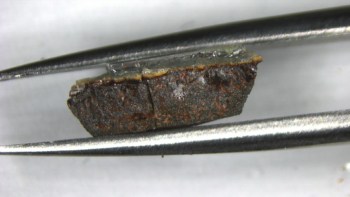
Physicists in the UK have shown that a superconductor can transfer a magnetic field from a magnet to a non-magnetic metal without becoming magnetized itself. The surprising effect is not predicted by any prevailing theory of superconductivity and could have important applications in the emerging field of superconducting spintronics.
In a conventional superconductor, electrical current is carried by “Cooper pairs” of electrons. The electron spins in a pair point in opposite directions and therefore the pair has zero net spin. The application of a strong magnetic field destroys superconductivity by encouraging both spins to point in the same direction, which tears the Cooper pairs apart. Weak magnetic fields cannot exist within a conventional superconductor, which acts to expel magnetic-field lines. As a result, superconductivity and magnetism are usually seen as mutually exclusive phenomena.
Pairs with spin
However, recent calculations suggest that when a superconductor is placed right next to a magnet, both spins in a Cooper pair can point in the same direction – thereby giving the pair a net spin of one. This intriguing theoretical development has given birth to the nascent field of superconducting spintronics, which seeks to create electronic devices that use the spin of Cooper pairs. While several experimental groups have claimed success in observing spin-one Cooper pairs, physicists have not been able to detect the expected magnetic fields within superconducting materials that are in close proximity to magnets.
Machiel Flokstra of the University of St Andrews and colleagues set out to map the field inside a device called a superconducting spin valve – a device that is designed to measure the interaction between magnetism and superconductivity. They used an exquisitely sensitive technique called low-energy muon spin rotation, in which muons are passed through a sample. The muon spins rotate around the local magnetic field until they decay, each emitting a positron along their spin axis as they do so. Detecting the positron reveals the muon’s spin-rotation rate, which in turn gives the local magnetic field.
The team’s spin valve comprised two ferromagnetic layers separated by a thin layer of a normal metal, all placed underneath a layer of superconducting niobium just 50 nm thick. Expecting it would make no difference to the outcome of the experiment, the researchers also included a layer of gold on the top of the spin valve: “There wasn’t any specific reason,” explains Flokstra, “but we thought ‘why not look into it?'”
Golden discovery
What the researchers found surprised them. They found no evidence of a magnetic field inside the superconductor, but they did see a magnetic field in the gold – even though gold is not normally magnetic. In other words, a magnet on one side of a superconductor can induce a magnetic field on the other side of the superconductor – even though there is no field within the superconductor. Furthermore, the researchers found that the induced magnetic field in the gold depended on the relative orientation of the fields in the two magnetic layers on the opposite side of the superconductor. When the two fields were perpendicular, a strong field was induced. When they were parallel, however, the effect was almost zero.
The researchers have several ideas for how the spin might be transferred, including the transfer of spin through the superconductor via spin-polarized Cooper pairs.
Jacob Linder of the Norwegian University of Science and Technology and Jason Robinson of the University of Cambridge both see the work as an important achievement. “Although this particular finding is surprising because it has no known theoretical explanation, it confirms a suspicion that it may be possible to do completely new physical things using superconductors and ferromagnets,” says Linder.
‘Really nice result’
Robinson says that of the three explanations the researchers posit, the most likely is the generation of spin-polarized Cooper pairs and their transmission through the superconductor. “It’s a really nice result,” he says, “and, for any of the people out there doubting that you could generate a spin triplet superconducting state then, I hope this will clarify that.” Linder and Robinson agree with Flokstra that, whatever its detailed explanation, the phenomenon could be important in superconducting spintronics. “This potentially opens a window for doing conventional, non-superconducting spintronics with much lower dissipational energy,” Linder says.
The research is published in Nature Physics.



